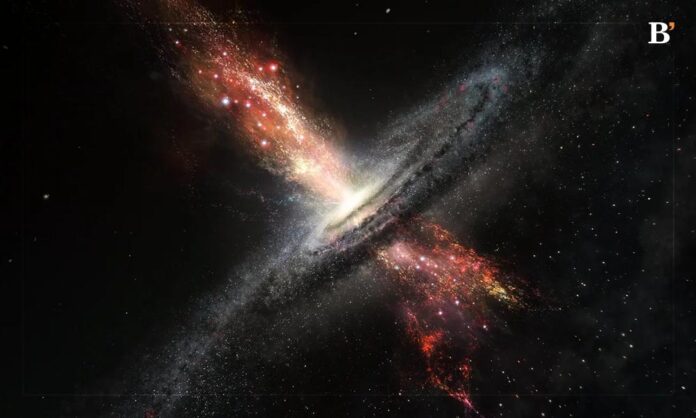Key Highlights
- Astronomers are observing a spectacle as the supermassive black hole at the centre of our Milky Way galaxy tears apart a strange dust cloud.
- The dust cloud, called X7, is about as massive as 50 Earths, orbiting our galaxy’s supermassive black hole, Sagittarius A*.
Using the W. M. Keck Observatory in Hawaiʻi, one of the world’s most powerful telescopes, astronomers have observed the cloud’s journey for the past 20 years. The filament is now as long as 3,000 sun-Earth distances, demonstrating the powerful gravitational forces exerted by Sagittarius A* on its surrounding objects.
The study’s lead author, Anna Ciurlo, an assistant researcher at the University of California, Los Angeles, said in a statement that the observations provide new insights into the processes governed by the powerful gravitational forces exerted by Sagittarius A* on its surroundings.
Everything You Need To Know About ChatGPT
Astronomers’ Observations
The astronomers observed X7 using the NIRC2 instrument on Keck, which reveals the universe in the heat-emitting near-infrared light, the same wavelength that NASA’s James Webb Space Telescope specializes in.
The astronomers found that the filament currently takes about 170 years to orbit around the galactic centre. Their calculations predict that the filament will make its closest approach to the black hole in 2036, after which it will completely dissipate.
After the filament’s demise, its material will be pulled towards the event horizon and consumed by the black hole. Then, as the dust particles accelerate and heat up, the process may result in a spectacular display of “fireworks”.
While the researchers have predicted the filament’s future with a high level of reliability, they know much less about its past. As a result of the merger of two stars, it is believed that during this process, a shell of dust and gas was ejected and subsequently formed the cloud.
X7 is one of many filaments in the Milky Way’s galactic centre, called the G objects. These filaments orbit extremely fast around the vicinity of the black hole at speeds of up to 490 miles per second (790 kilometres per second).
The insights gained from studying X7 could aid astronomers in predicting the fate of counterparts. As X7 approaches its ultimate demise, astronomers will continue to monitor its journey and gather valuable information.




